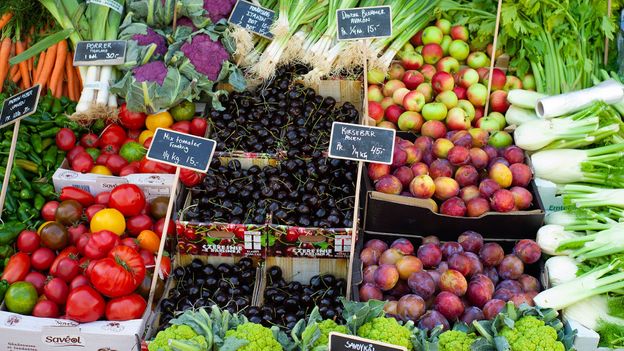
The food market is an ever-evolving entity that plays a crucial role in the global economy, driving innovation, sustainability, and consumer trends. Across the world, markets of all sizes serve as hubs for the exchange of goods, from fresh produce and meats to ready-made meals and niche food products. These marketplaces are not just places of commerce, but also centers of culture, history, and social interaction. They reflect the diversity of the food industry while catering to the tastes and preferences of local communities and international consumers alike.
Evolution and Trends in the Food Market
Over the years, the food market has seen a significant transformation, shaped by technological advancements, shifts in consumer behavior, and changing global dynamics. The rise of online grocery shopping and food delivery services has revolutionized how people access food, offering convenience and flexibility to a growing population of busy consumers. This shift has been accompanied by the emergence of meal kit subscriptions and prepared meal services, which offer more convenience to households across various income brackets.
In addition to these conveniences, the demand for organic, sustainable, and ethically sourced products has surged. Consumers are more conscious of the environmental and social impact of their purchasing decisions, leading to a boom in the organic segment of the food market. This has resulted in an increase in the availability of plant-based and environmentally friendly food options, as well as transparency about the origin of the food they consume.
The Global Reach of the Food Market
The food market is not confined to any one region; it has a truly global presence. Markets in major cities, such as New York, Paris, and Tokyo, provide access to an array of foods from every corner of the globe. At the same time, local farmers’ markets in rural areas continue to play a key role in connecting producers with consumers and fostering a sense of community.
International trade also plays a significant role in the expansion of the food market, as countries engage in the import and export of agricultural goods. Products that were once considered exotic or specialty items—such as avocados, quinoa, or chia seeds—are now common in supermarkets and grocery stores worldwide. This exchange not only boosts the availability of diverse food options but also supports economic growth in both developing and developed nations.
Challenges in the Food Market
Despite its significant growth, the food market faces a range of challenges. One major issue is the accessibility and affordability of healthy food. In many parts of the world, fresh and nutritious food remains out of reach for low-income families, leading to food insecurity and a growing reliance on processed foods. There is also the issue of food waste, which is an unfortunate byproduct of the industry, as millions of tons of food are discarded each year due to inefficiencies in the supply chain and overproduction.
Sustainability is another growing concern in the food market, as the environmental impact of food production, packaging, and distribution becomes more apparent. Companies are increasingly being held accountable for their environmental footprint, pushing them to find innovative ways to reduce waste, conserve water, and lower carbon emissions.
The Future of the Food Market
Looking ahead, the food market will continue to evolve with consumer preferences and the demands of a changing global landscape. Technology will play an even larger role in shaping how food is produced, distributed, and consumed. The rise of lab-grown meat, vertical farming, and advancements in food preservation methods are just a few examples of innovations that could revolutionize the industry.
At the same time, the demand for healthier and more sustainable food options will continue to drive the industry toward creating solutions that balance both profitability and environmental stewardship. As the global population grows, the food market will face increased pressure to feed more people while also addressing the challenges of waste, sustainability, and accessibility.
Conclusion
The food market is an intricate web of producers, distributors, and consumers, all of whom influence its structure and function. It is a reflection of the diverse needs and desires of global populations, driven by a desire for convenience, health, and sustainability. As the world continues to change, so too will the food market, adapting to new challenges and innovations while maintaining its central role in the lives of people around the globe.